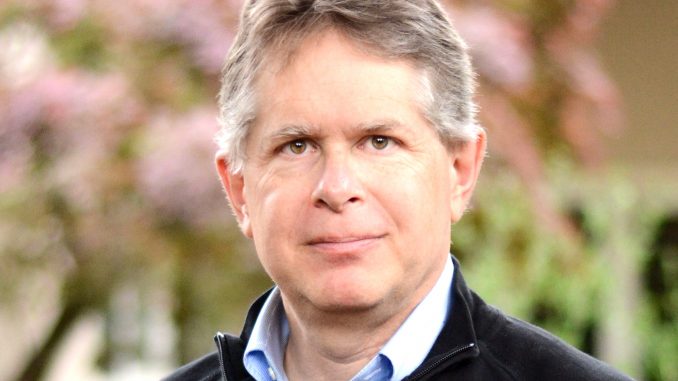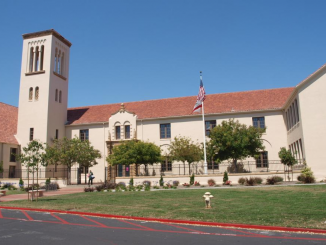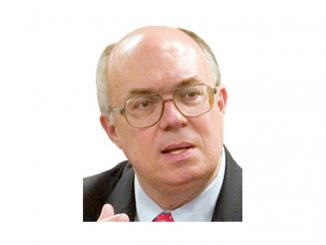
BY ALLISON LEVITSKY
Daily Post Staff Writer
Palo Alto school board Vice President Todd Collins on Thursday (Dec. 13) chided Stanford officials for what he called a “very misleading” public statement that the university’s proposed 3.5-million-square-foot expansion would pose “no impact” on the school district.
University officials said in a statement that the new faculty and grad students expected to move to campus as a result of the expansion won’t have enough school-aged children to justify a new school on campus.
“Stanford’s a great institution,” Collins said. “I continue to be surprised by why they are defensive and misleading about an issue that everybody else in the community seems to understand clearly.”
As Santa Clara County weighs Stanford’s application to expand over the next 17 years, the school district has been pushing for Stanford to help build a new elementary school on campus and to chip in for teacher salaries through a formula based on the number of students Stanford sends to the district.
Stanford has pointed out that the district already owns school campuses that it’s not using, though they’re not near the new housing.
Under the California Environmental Quality Act, the university isn’t required to pay the school district, dedicate land or comply with any other requirements associated with the cost of educating the school-aged children of new students and employees brought to the district area by the new development.
“That doesn’t mean that there aren’t impacts (there are) and that mitigations will not be needed (they will be) — just that they may not be required under CEQA,” Collins told Stanford officials in an email Thursday.
On Wednesday, Santa Clara County released the Final Environmental Impact Report, or FEIR, on Stanford’s 3.5 million-square-foot proposed expansion, which is up to county leaders to approve or deny.
$650,000 report
The county paid the consulting firm Environmental Science Associates about $650,000 to complete the report, county Planning Manager Rob Eastwood told the Post.
Part of the argument is over the number of school-aged children expected to live in each faculty and staff housing unit. Stanford generally doesn’t have to pay property taxes on academic development, which includes employee housing.
The report sided against the school district’s estimate that for every employee housing unit at Stanford, 0.98 school-aged children will live there.
“The county concludes that the student generation rate of 0.5 students per new faculty/staff housing unit used in the (FEIR) ‘is more than 30% higher than (the) actual student generation rate of 0.38 for existing Stanford faculty/staff housing, and is therefore conservative,’” Stanford land use spokesman Joel Berman said in a statement yesterday.
Schools seeking a per-student fee
But Collins said yesterday that it doesn’t matter what the estimated student generation rate is.
That’s why the district is asking for an annual payment from Stanford per student, since it’s hard to say how many students the expansion would bring into the district when so many unknowns remain about the new housing.
County Supervisors Joe Simitian and Cindy Chavez are currently negotiating a closed-door development agreement with Stanford for additional public benefits outside what the law requires Stanford to provide, which could include per-student fees or a new campus elementary school.




Right now, 25% of Stanford tenure track faculty are women. That needs to change. As RBG says, maybe it should be 25% men for awhile. Why not, right. That means the pipeline of tenure track grad students isn’t as represented by women as is will be in the future. That seems clear. It is well known that women have children earlier than men for biological reasons. Without going into detail, for women, graduate school has better timmg for having children than during early faculty. The previous two points indicate that in the future, a higher ratio of graduate students at Stanford will have children than seen now. I don’t think the above takes $650k to see. What infrastructure changes is Stanford making to support that demographic shift in their graduate student body that will support a demographic shift in not just their faculty but also the global faculty pool?
This is an important issue and Stanford should pay more to support schools. As a member of the Stanford faculty and a homeowner on campus, I do think it is important to recognize that those of us who own homes on campus do pay property taxes. It is not helpful to issue blanket claims about Stanford community members not paying taxes–we are paying ours and are part of the community, even though we cannot vote in local elections, use some city spaces such as certain parks, and are otherwise not given much voice. Please be sure to note that the property tax issue is more complex. Some new units would not be taxed, but that does not mean that no Stanford faculty are paying into the system. We deserve a bit of respect here. Again, I’m all for fairness on this matter. That needs to go both ways in reporting.
Z Frank is right of course – Stanford rental housing is the problem, not housing occupied by the homeowners. The homeowners pay taxes just like everybody else. But Stanford rental housing – Escondido Village, Stanford West, and over 50 Stanford-owned houses and condos – creates a multi-million dollar hole in the PAUSD budget already. The proposed GUP housing, all rental, will make it much worse. Stanford has to do the right thing here – FULL MITIGATION for its growth.
This is an important issue and one that I think everyone should take the time to learn the facts and not issue misleading statements – like Mr. Collins did above – it was the Final EIR – done by a consulting firm hired by the County – that stated there was a finding of no significant impact to the student population. Yes, Stanford faculty who own their homes pay Palo Alto taxes. For some reason, everyone keeps saying that’s not the case. I haven’t been able to get an exact number on it, but it was around either 690 or 960 (yes I did flip my sixes and nines). Second, Stanford voluntarily pays property taxes on Stanford West apartment complex. For some reason, no one mentions that. Third, if people read the Final EIR, they would see why Mr. Collins and the school board multiplier of .98 was considered incorrect: that assumes all housing will be single family housing. Stanford is not building single family housing. And, the Final EIR stated the number of currently empty classrooms, the leasing of schools owned by PAUSD to other schools as the reason for why PAUSD does not need another school built (so they can leave it empty or lease it out too?) But, this huge focus on Stanford and its impact on schools is a diversion away from the larger issue of school funding in Palo Alto. According to the Santa Clara Assessor’s Annual Report, 83% of the property taxes for Palo Alto – which includes all those professor’s home – come from properties that were transfered in the last 18 years. Homes transferred prior to 2000 account for only 17% of the taxes. Okay, but how many peole know that about 45% of Palo Altans rent? Ask yourself when was the last time that rental home in your neighborhood was sold? In my neighborhood, the rental homes have not transfered since I moved here in 1998. So, while our rents have gone up – pushing out the teachers and the artists and yes, the Stanford professors and grad students – the taxes on many of those properties have not. And, there are alot more PAUSD students who live in rental housing in Palo Alto than who live in rental housing at Stanford.
I hope everyone commenting here takes the time to read through the Final EIR – especially the section on housing. Faculty who own homes do pay taxes – the same as everyone in Palo Alto. Stanford also voluntarily pays taxes on Stanford West. When it was built, it was not anticipated that Stanford would need the housing so it was built and approved with the idea that it would generate taxes, so they owner that commitment. Todd Collins is mis-speaking. Stanford did not say their growth would have no significant impact on school population – that was the conclusion from the study conducted by the County. And, before everyone starts going after Stanford and their rentals, Palo Altans should consider this: According to the Santa Clara Assessor Annual Report, 83% of property tax revenue comes from lots transferred in the last 18 years – including all those professor’s homes. They have a high rate of turnover. 17% comes from homes purchased prior to 2000. And, how large is Palo Alto’s renting population? Forty-six percent. That would be a really, really good question to know the answer to. How many of those rentals have transferred ownership in the last 18 years? On my block, I know of only one home that was a rental that has been sold since 1998 when I got here – and it was torn down. In 1951 Stanford annexed land to Palo Alto for the establishment of the Research Park – an enormous source of revenue for the City of Palo Alto. With the creation of Research Park, tax revenues went up, and the schools benefited greatly and more people with college degrees were drawn here for the jobs and the schools got better and better. And, Stanford manages it so that every time they change tenants at Research Park, the property gets reassessed. Prop 13 has not impacted those lands. How many people in Palo Alto manage their rentals so that every time they switch tenants, their property gets reassessed? Forty six percent of Palo Altans rent.